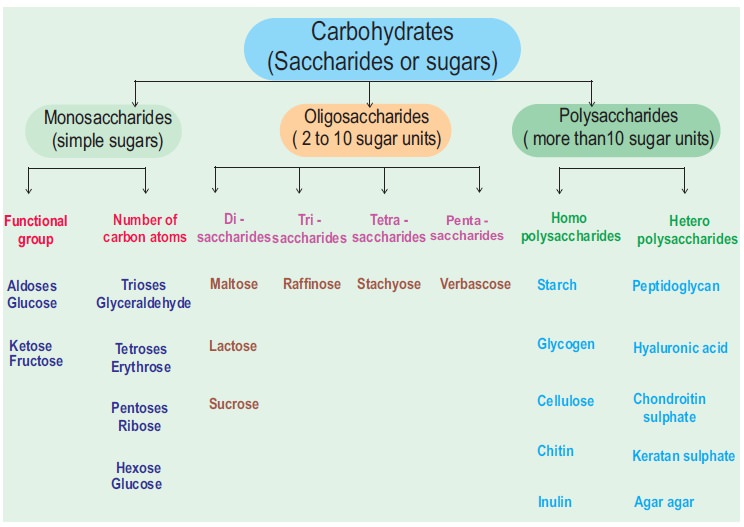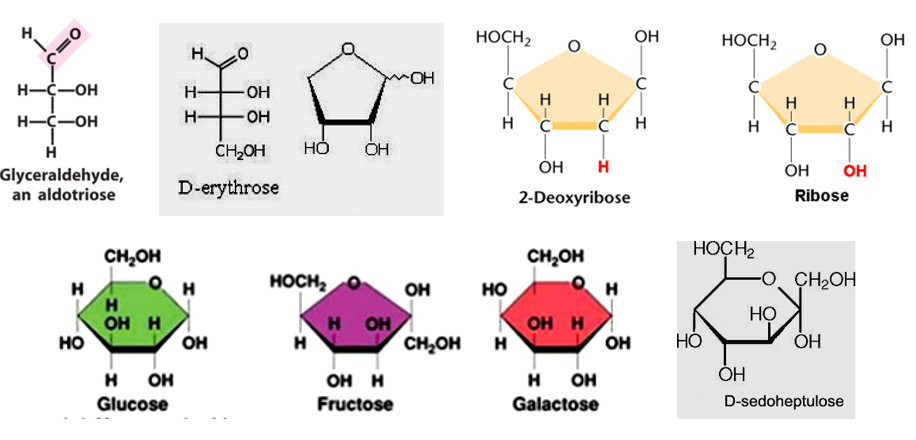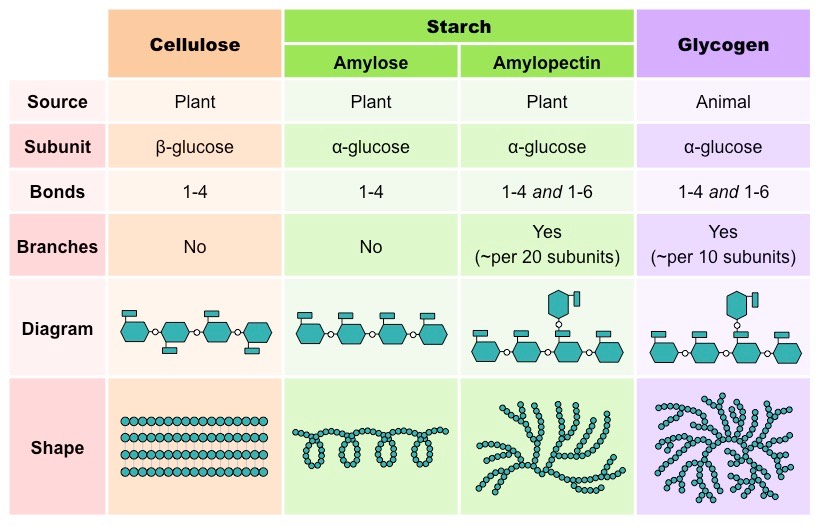- Organic compounds found in animal and plant body are carbohydrates, lipids, amino acids, proteins, nucleotides, hormones and vitamins.
- Some of these remain in colloidal form in the aqueous intracellular fluid.
- Others exist in non-aqueous phases like the lipid membrane and cell walls.
Carbohydrates
- Carbohydrates are compounds of carbon, hydrogen and oxygen, where the ratio between hydrogen and oxygen is 2:1.

Monosaccharides
The simplest carbohydrates are monosaccharides, which may be composed of 3 to 7 carbon atoms; they are named as follows:
-
-
-
- Triose (3C) e.g., Glyceraldehyde
- Tetrose (4C) e.g., Erythrose
- Pentose (5C) e.g., Ribose, Deoxy-ribose, Ribulose
- Hexose (6C) e.g., Glucose, Fructose, Galactose
- Heptose (7C) e.g., Sedoheptulose
-
-
The monosaccharides have either a free aldehyde or ketone group, which can reduce Cu2+ ions to Cu+ ions; they are called reducing sugars.

Oligosaccharides
Oligosaccharides may have two or a few monosaccharides and are named as follows:
-
- Disaccharides (2 C): e.g., Sucrose, Maltose, Lactose.
- Trisaccharides (3 C): e.g., Arabinose, Raffinose
- Tetrasaccharides (4 C): e.g., Stachyose
- Pentasaccharides (5 C):e.g., Verbascose

Polysaccharides
- These are made of hundreds of monosaccharide units.
- Polysaccharides also called “Glycans“.
- Long chain of branched or unbranched monosaccharides is held together by glycosidic bonds (1-4 & 1-6 glycosidic bonds)
- Polysaccharides are insoluble in water and are sweetless.
- Cellulose is an example built from repeated units of glucose monomer.

Functions of Carbohydrates
- Glucose is oxidised to produce energy in living cells.
- Ribose and deoxyribose form components of nucleotides and nucleic acids.
- Trioses, tetroses, pentoses and heptoses are the intermediates in the carbon fixation resulting in hexoses.